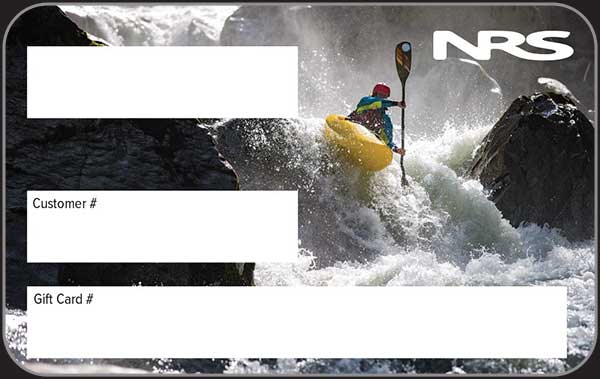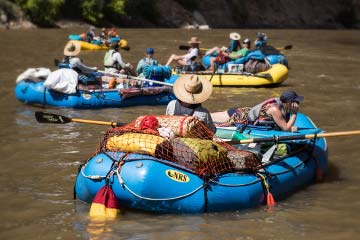
How Hypothermia Affects Paddlers
Understanding the mechanisms of heat loss, and gain, helps us plan strategies for regulating that loss so we stay safe and comfortable. One generally accepted norm is the average human body core temperature of 98.6°F (37°C). When the core temperature drops significantly below that, we become “hypothermic,” or are said to be suffering from hypothermia.
With hypothermia comes a significant loss of strength, coordination and alertness. Paddlers suffering from hypothermia may become unable to paddle effectively or to assist in their own rescue.
But hypothermia does not always occur in cold weather. Unexpected summer storms can soak an unprepared boater, or the wind can steal heat from the body. An unprotected boater who takes a long swim on a cool, overcast day may find it hard to warm back up. An injured victim may experience hypothermia as shock sets in.
Article Contents:
How Hypothermia Works
The following information is from Whitewater Rescue Manual by Charles Walbridge & Wayne A. Sundmacher. Charlie Walbridge was one of the first individuals to be inducted into the International Whitewater Hall of Fame and is recognized for his many contributions to the whitewater safety and rescue field.
The human body has three layers: an outer superficial layer, an intermediate layer and the inner core.
- The superficial layer consists of the skin and subcutaneous tissue.
- The intermediate layer is made up of the extremities, skeletal and muscular tissues, and some lesser organs.
- The inner core contains the most critical organs; the heart, lungs and brain.
- When hypothermia sets in, the body prioritizes heat distribution. It works to keep the vital core warm, hoarding the additional calories required to heat parts of the body that are not necessary for survival.
Warning Signs of Hypothermia
As the body begins to chill, the first signs of hypothermia come in the form of muscle tension and goosebumps. This non-shivering heat generation can double the metabolic rate. As the core temperature continues to drop, shivering begins. These uncontrolled contractions can increase the metabolism to five times the normal rate. Now the body is burning roughly 400 calories per hour. That’s approximately the number of calories in two Snickers bars. Under the right conditions, the body can still rewarm itself.
At some point, the body starts to realize it’s beginning to lose its battle to heat all its layers and decides it can survive without the superficial one. By shunting the blood flow away from the skin and outer tissues, it reduces the flow by about 1–2 percent. Strenuous activity could increase heat output, but the body has limited stores of fuel. Heating the entire body might burn what reserves are left and leave the victim to cool even more quickly.
When core body temperature falls below 95°F, shivering diminishes. The patient may become confused—reasoning becomes clouded. With continued heat loss, the body decides to sacrifice parts of itself so that the brain can survive. By reducing the area being heated, life is prolonged. First, the body decides it doesn’t need the extremities, and carbon dioxide and lactic acid build up in these areas. Then it begins to shut down blood flow to unnecessary organs. And finally, it will limit flow to the three organs that sustain life.
As the body continues to cool, the victim begins to lose touch with reality. In some cases, they experience atypical mood swings and may become argumentative or combative when assistance is offered. Once the core body temperature drops to 90°F, shivering is replaced by muscle rigidity, and mental faculties are severely impaired. The victim is semiconscious, progressing toward unconsciousness. As the core temperature continues to drop, the metabolic rate diminishes, oxygen consumption drops and respiration slows. Cardiac output also slows and weakens, resulting in further reduction in blood flow.
As pulmonary and cardiac function diminish, cardiac arrhythmias develop, and ventricular fibrillation, a spasm of the heart muscle, eventually leads to cardiac arrest.
Stages of Hypothermia
A review of hypothermia symptoms is as follows:
- Temperature above 95°F: Conscious and alert. Vigorous uncontrollable shivering, pain or numbness in extremities, loss of manual dexterity, slurring of speech.
- 90° to 95°F: Conscious. Mildly impaired mental faculties. Diminished shivering is replaced by muscle rigidity.
- 86° to 90°F: Semi- or fully-unconscious. Severely impaired mental abilities. May appear intoxicated. Rigid muscles, cardiac arrhythmias.
- 80° to 86°F: Unresponsive, unconscious. Rigid muscles, dilated pupils barely responsive to light, diminishing or nonexistent pulse and respiration. Blue-gray skin color.
- < 80°F: Ventricular fibrillation, cardiac arrest. Pupils fixed and dilated. Death.
How the Body Loses Heat
We lose heat from our bodies in four ways: radiation, conduction, convection and evaporation. Much of the information in this section comes from Hypothermia, Frostbite and Other Cold Injuries by Gordon G. Giesbrecht, Ph.D and James A. Wilkerson, M.D. This is an excellent book, written in layman’s language, on this very technical medical subject.
Radiation
Two easily recognized sources of this energy are the sun and a bonfire. Standing outside on a sunny day or next to a fire, you readily feel the heat from these radiation sources. Well, your body is also a radiant heat source and radiation is usually our largest source of heat loss. Giesbrecht and Wilkerson state, “In a calm, temperate climate of about 70°F a clothed, sedentary person loses approximately 60 percent of their body heat through radiation.”
It’s hard to prevent radiation heat loss. So-called “space blankets” use a reflective material to bounce this radiation back to the body. At NRS, we add fine particles of titanium, a reflective metal, to the adhesive that bonds the inner fabric layer in our neoprene wetsuits, gloves, footwear, etc. to help reflect heat back to the body. Since it’s hard to limit radiation heat loss, we must concentrate on limiting the other heat loss sources.
Conduction
This is the direct transfer of heat away from the body by substances with which it comes in direct contact. Air isn’t very dense and is a poor heat conductor, as opposed to water, which conducts heat ~25 times more efficiently than air. If you go for a swim, that water is sucking heat away from you at a very rapid rate. And you don’t have to be in direct contact with the water to feel the effect. As kayakers know, cold water outside the hull of their boat is a real heat sink, rapidly chilling an unprotected lower body.
Convection
Convective heat loss occurs when water or air that is cooler than the body contacts it, is warmed by the body and moves away.
A simple example of this is blowing on a cup of soup or coffee to cool it down. The air above the cup is warmed just above its surface. Blowing moves that air away and cooler air comes in to replace it, extracting more heat from the cup.
Even when you are not in the water, convection cools your body. While air is a poor conductor, moving air sucks away heat efficiently—thus the “wind chill effect.” With wind, the amount of heat lost increases as the square of the velocity. Therefore, a wind of 8 mph removes four-times as much heat as a wind of 4 mph.
Evaporation
For us boaters, this is the changing of liquid water to water vapor, which requires heat in making the transformation. It takes 0.58 kilocalories of heat to evaporate one gram of water. One ounce of water equals 28 grams. One cup of water equals 224 grams. You get the picture. You’re out on the water getting hit by splash and rain, plus the wind is blowing. Lots of heat is getting sucked away.
The Bottom Line
It is vital that you protect yourself from excess heat loss. Most fatalities during cold-water boating result from drowning in association with incapacitation caused by the cold or from hypothermia. There is absolutely no excuse for not outfitting yourself with protection from cold-water heat loss.
Remember, always “dress for the swim.” That’s your worst-case scenario and what you need to be prepared for.
Giesbrecht, G., & Wilkerson, J. A. (2006). Hypothermia, frostbite, and other cold injuries: Prevention, survival, rescue, and treatment (2nd ed.). Mountaineers Books.
Walbridge, C. C., & Sundmacher, W. A. (1995). Whitewater Rescue Manual: New techniques for canoeists, kayakers, and rafters. Ragged Mountain Press.
 NRS Gift Card: Always Fits, Always Wanted
NRS Gift Card: Always Fits, Always Wanted




